


|
We offer Alaska raft trips that offer scenic views, wildlife viewing, fishing, and whitewater.
Custom group Alaska rafting adventures are available on request. If have interested in something special or participating in an exploratory expedition, please contact us with your ideals or to see what plans are being made.
Kongakut River - 10 day Arctic National Wildlife Refuge Rafting Safari. Explore Alaska's remote Arctic National Wildlife Refuge (ANWR) by raft on the "river of caribou". Our trip coincides with the annual migration of the 130,000-strong Porcupine caribou herd and passes through some of the world's most pristine wilderness.
Lake Creek - 7 day Whitewater Rafting and Fishing Adventure. Our favorite fly-in wilderness adventure river, great combination exciting whitewater and great Alaska fishing. Lake Creek offers almost continuous Class II/III whitewater with a few Class IV rapids, five species of salmon, rainbow trout and arctic grayling.
Chulitna River - 4 day Denali Raft Adventure. An excellent family adventure and sampling of Alaska's best wilderness and geography at a casual pace. We travel through Denali State Park, upper Susitna Valley and take out near Trapper Creek, a historic gold mining town. |
|
|
|
 |
Alaska Travel Information and Frequently Asked Questions
If you need more information or have questions, please e-mail or call us. 907-222-1632
 You probably have lots of pre-trip questions about Alaska and hopefully this FAQ will answer most of them, and help you make a informed decision about travel options in Alaska and what to expect if you are considering one of our guided sea kayaking, rafting, or bear viewing adventures. You probably have lots of pre-trip questions about Alaska and hopefully this FAQ will answer most of them, and help you make a informed decision about travel options in Alaska and what to expect if you are considering one of our guided sea kayaking, rafting, or bear viewing adventures.
Beside the adventure trips Backcountry Safaris guides, we work with a number of other hotels, lodges and tours that are included in our custom Alaska tour packages. Be sure to read through the individual activity tour pages on our site for each adventure. You will find additional information in each itinerary and additional trip terms and conditions for that tour.
Again, thank you for allowing us this opportunity to plan a special adventure for you. If you have additional questions please feel free to call or email us anytime. We are locally owned and we live in Alaska - we would love to talk with you about Alaska.
About Backcountry Safaris
- What's the history of Backcountry Safaris?
- What kind of trips does Backcountry Safaris offer?
- What kind of travelers book trips with Backcountry Safaris?
- Why should I contact Backcountry Safaris to help with my Alaska travel plans?
- Do you have references?
General Alaska Travel Information
- What would be the most important advise you would give someone planning a trip to Alaska?
- When is the best time to visit Alaska?
- How about Denali National Park, when is the best time to visit Denali?
- When should I make my reservations?
- What are the top things to see and do while visiting Alaska?
- Do I need a passport?
- Can I see the Aurora Borealis (Northern Lights) in the summer?
- How much daylight does Alaska have?
- What weather and temperature can I expect?
Backcountry Safaris' Sea Kayaking, Rafting, and Bear Viewing Adventures
- Are there age requirements?
- I'm a solo traveler?
- Do I need to be in good shape to join one of the trips?
- What are my responsibilities on a trip?
- How many people are on your trips?
- Do I need to know how to sea kayak to go on one of your sea kayaking trips?
- Do you have single kayaks or do I have to paddle a double kayak?
- On your sea kayaking trips, how much paddling is generally done in a day?
- What gear does Backcountry Safaris supply?
- Does Backcountry Safaris supply dry suits?
- On sea kayaking trips what will the water conditions be like?
- What are the chances of seeing whales or bears or sea lions or caribou?
- What about bears, how close will they get?
- What about the camping?
- Where do we wash? Are there toilets?
- What is the food like?
- Is it appropriate to tip the guides?
Making Reservations, Terms and Conditions.
- How do I make a reservation with Backcountry Safaris?
- What kind of deposit is required and when is the final payment due?
- Should I buy travel insurance?
- Does Backcountry Safaris offer group discounts and private trip?
- What about trip delays and are cost increases a possibility?
- What are your cancelations policies?
- What are Backcountry Safaris limitations of liability?
About Backcountry Safaris
1. What's the history of Backcountry Safaris? Top
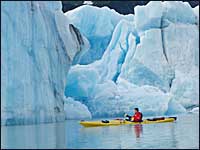 Backcountry Safaris was founded in 1986. The company was born out of the owner's fascination with Alaska's vast wilderness and wildlife and a desire to share this experience with others. Owner Ron Clauson is a well-known Alaskan adventurer and has been rafting, kayaking, hiking and exploring Alaska's backcountry for more than 38 years. He is an experienced whitewater rafter and longtime fly fisher, and started guiding fishing trips when he was 14. Having traveled extensively throughout the Alaskan bush, Ron has acquired a lifetime of knowledge on logistics, expedition planning and group travel into remote parts of Alaska. Today, Backcountry Safaris operates weekly scheduled sea kayaking, rafting and bear viewing departures and works in conjunction with other local tour companies to offer guests a unique Alaska experience. Backcountry Safaris was founded in 1986. The company was born out of the owner's fascination with Alaska's vast wilderness and wildlife and a desire to share this experience with others. Owner Ron Clauson is a well-known Alaskan adventurer and has been rafting, kayaking, hiking and exploring Alaska's backcountry for more than 38 years. He is an experienced whitewater rafter and longtime fly fisher, and started guiding fishing trips when he was 14. Having traveled extensively throughout the Alaskan bush, Ron has acquired a lifetime of knowledge on logistics, expedition planning and group travel into remote parts of Alaska. Today, Backcountry Safaris operates weekly scheduled sea kayaking, rafting and bear viewing departures and works in conjunction with other local tour companies to offer guests a unique Alaska experience.
2. What kind of trips does Backcountry Safaris offer? Top
While extensive, our web site just contains the most popular locations and tours we offer. Consider it a starting point. Backcountry Safaris focuses on Alaska adventure travel and assisting Alaska travelers and groups in planning complete custom Alaska travel itineraries. We offer lodging and tour options in most Alaska cities and remote wilderness locations. Backcountry Safaris got its start as an Alaska wilderness adventure company guiding sea kayaking trips, rafting expeditions, and bear viewing trips and we continue to offer these guided wilderness adventures. We offer trips to remote Alaska locations, Alaska National Parks, Wildlife Refuges and state wilderness areas. Besides the scheduled trips on our web site, every year we take groups out on custom wilderness adventures.
If you can imagine it, Backcountry Safaris can make it happen. Please give us a call or email so we can go over all the options that are available in the areas you would like to visit.
3. What kind of travelers book trips with Backcountry Safaris? Top
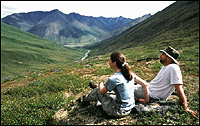 Most of our travelers are people just like you - travelers wanting specialized Alaska travel advice, desiring a custom itinerary or who want to get away from the crowds and explore Alaska's incredible wilderness. Our trips may be small private parties or diverse groups that may include solo travelers, couples and families. Everyone from pre-teens to adults into their 70s travel on our trips. We plan as best we can to assure that the physical demands and group chemistry of our trips makes for a good mix. Most of our travelers are people just like you - travelers wanting specialized Alaska travel advice, desiring a custom itinerary or who want to get away from the crowds and explore Alaska's incredible wilderness. Our trips may be small private parties or diverse groups that may include solo travelers, couples and families. Everyone from pre-teens to adults into their 70s travel on our trips. We plan as best we can to assure that the physical demands and group chemistry of our trips makes for a good mix.
4. Why should I contact Backcountry Safaris to help with my Alaska travel plans? Top
We live in Alaska and offer you our local expert advice, Alaska travel experience and knowledge of the best things to see and do in Alaska. Alaska is a very large state, with few roads, and large expanses of remote wilderness. Trying to figure out all the logistics of transportation, lodging and what to see and not see can be overwhelming for someone that does not live in Alaska. We live in Alaska and Alaska is our playground. When you contact Backcountry Safaris you will be talking with someone who knows Alaska and has the inside scoop, not some out of state travel agent. With one phone call, you will be talking with an Alaska Certified travel expert. Our goal is to custom design a tour that matches your interests and desires and not offer you some off-the-shelf packaged tour. You'll also get the local inside secrets of added things to do and see that can be done for free or at a very low cost.
5. Do you have references? Top
Yes, please contact us and we will be happy to furnish you with references. Backcountry Safaris has been helping independent Alaska travelers plan Alaska vacations since 1986.
General Alaska Travel Information
1. What would be the most important advise you would give someone planning a trip to Alaska? Top
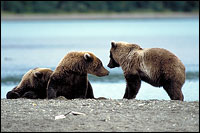 Alaska is big. Really big. It's hard for most people to understand just how large Alaska really is. To try to picture this vastness, take a look at this map graphic of Alaska superimposed over the lower 48 states (continental United States). The most important advice we can give you is "seeing less means seeing more". Many travelers don't realize just how long it can take to get from one location to another. You could easily spend your whole vacation time just looking out the window of a car, bus, train or plane getting from one location to the next and not have time to enjoy what Alaska has to offer. If your time is limited, plan on visiting just one or two locations and take time to immerse yourself in Alaska's national history, wilderness and spectacular scenery. Alaska is big. Really big. It's hard for most people to understand just how large Alaska really is. To try to picture this vastness, take a look at this map graphic of Alaska superimposed over the lower 48 states (continental United States). The most important advice we can give you is "seeing less means seeing more". Many travelers don't realize just how long it can take to get from one location to another. You could easily spend your whole vacation time just looking out the window of a car, bus, train or plane getting from one location to the next and not have time to enjoy what Alaska has to offer. If your time is limited, plan on visiting just one or two locations and take time to immerse yourself in Alaska's national history, wilderness and spectacular scenery.
2. When is the best time to visit Alaska? Top
The answer to this question depends on what you want to see and where you would like to visit. Every month offers something special so it would be best to call us and discuss your options. Generally speaking the main summer tour season is the last week of May through the first week of September. In most areas of Alaska the prime time would be the middle of June through the middle of July but there really is no bad time in that June through the end of August time frame. Some areas in Alaska, such as rivers and lakes north of the Arctic Circle, can still be frozen into the first of June. Some travel discounts can be had in the shoulder season time frame, which is the last of May and the first week of September. The last week of August and the first week of September usually means less people and fall colors but also has cooler temperatures and can be a little rainy. But if you come prepared it can be a great time to visit.
3. How about Denali National Park, when is the best time to visit Denali? Top
 Our recommendation for the best time to visit is June 15 - August 30. Even though Denali National Park is open year round, most visitors come to see the abundant wildlife along the park road. The shuttle buses operated by the park service start running about the middle of May but only go in about halfway and sometimes not that far, depending on how much snow fell over the winter. By the end of May, the roads have been cleared of any snow left from winter and by the first of week June the park shuttle buses normally start running the full length of the road. The private tour buses that go all the way to the end of the road and offer the best Denali experience start running about June 4. The road starts to close down shortly after the first week of September. Our recommendation for the best time to visit is June 15 - August 30. Even though Denali National Park is open year round, most visitors come to see the abundant wildlife along the park road. The shuttle buses operated by the park service start running about the middle of May but only go in about halfway and sometimes not that far, depending on how much snow fell over the winter. By the end of May, the roads have been cleared of any snow left from winter and by the first of week June the park shuttle buses normally start running the full length of the road. The private tour buses that go all the way to the end of the road and offer the best Denali experience start running about June 4. The road starts to close down shortly after the first week of September.
4. When should I make my reservations? Top
Our suggestion is make reservations as soon as you can if your travel dates are not flexible. If you plan to visit Denali National Park, be aware that this is the most visited location in Alaska and there is limited lodging and limited park tour bus seats available going into the park, so making early reservations is required. Some popular lodges and unique adventure tour spaces can fill up more than a year in advance.
5. What are the top things to see and do while visiting Alaska? Top
Alaska is BIG and there are many special places to visit. What is the best is a matter of opinion and what special interests one might have. The suggestions here reflect the most commonly asked for destinations and activities. If you're an independent traveler, adventurous, and perhaps don't mind roughing it in a remote location, we would be pleased to share some inside secrets with you. Give us a call; we would love to talk with you about the many out-of-the-way locations not listed here.
Kenai Fjords National Park out of Seward is famous for its calving tidewater glaciers, whales watching, abundant marine wildlife, and marine birds. The ultimate way to experience Kenai Fjords is by sea kayak. If you're not quite that adventureous or your vacation time is limited, there are one day wildlife and whale watching glacier cruises.
 Exploring Denali National Park & Preserve can be a highlight to a visit to Alaska, but it is also one of the most visited locations in Alaska so expect to see lots of other tourists. Denali has a large population of wildlife and is one of the best places in Alaska to see wildlife. A bus tour along the park road is almost a guarantee that you will see wildlife such as brown bears, caribou, moose, wolves, Dall sheep and numerous bird species. Besides the park bus tour, a flight-seeing trip around Mt Denali (Mt. McKinley) is spectacular and up high on our recommended to do list. Jeff King's Dog Mushing demonstration and nearby raft trips are fun side trips while in Denali. Getting to and from Denali from Anchorage on the Alaska railroad's Denali Star Train is another must do. The scenery along the railrroad is amazing. When planning a trip to Denali, it is best to plan at least a minimum of 3 days. Since Denali is the most visited location in Alaska, lodging and seats on the park bus tours are very limited so you should make reservations well in advance. Exploring Denali National Park & Preserve can be a highlight to a visit to Alaska, but it is also one of the most visited locations in Alaska so expect to see lots of other tourists. Denali has a large population of wildlife and is one of the best places in Alaska to see wildlife. A bus tour along the park road is almost a guarantee that you will see wildlife such as brown bears, caribou, moose, wolves, Dall sheep and numerous bird species. Besides the park bus tour, a flight-seeing trip around Mt Denali (Mt. McKinley) is spectacular and up high on our recommended to do list. Jeff King's Dog Mushing demonstration and nearby raft trips are fun side trips while in Denali. Getting to and from Denali from Anchorage on the Alaska railroad's Denali Star Train is another must do. The scenery along the railrroad is amazing. When planning a trip to Denali, it is best to plan at least a minimum of 3 days. Since Denali is the most visited location in Alaska, lodging and seats on the park bus tours are very limited so you should make reservations well in advance.
Alaska is world famous for its salmon, halibut, and trophy trout fishing. For big halibut you'll want to plan to visit Homer, Alaska. For a chance to catch a world record king salmon, the Kenai River and Kasilof River would be your destination. For a combination halibut and salmon fishing trip, try Seward. And if you just want to catch lots of fish, trout, grayling, and salmon, a raft trip down a remote wilderness river is very nice. Or if your budget can afford it and you want the comforts of home and a warm bed at night, a fly-out lodge based fishing trip is the ultimate Alaska fishing vacation.
Bear viewing would be a highlight to any Alaska vacation. The best places to see brown bears in Alaska are in Katmai National Park or on the coast of Lake Clark National Park. Both are remote locations and to get there requires flying in a small bush plane. There are one day trip options from Anchorage or Homer, AK. Homer offers more time on the ground viewing bears and Anchorage offers more convenient travel. If you have the time spending 2 or 3 days at a bear viewing camp is an amazing experience or for the ultimate bear viewing trip look at Backcountry Safaris' 10 day Savonoski Loop Kayaking adventure.
Tour Alaska's Inside Passage. There are many cruise options, including big ships, small boats, and even sailing options. The small cruise boats offer the best experience but are on the high end of the cost scale. For the budget minded person that can be a little flexible in their travel time, the Alaska State Ferry is fun. If you're adventurous and want to save money you can just roll out your sleeping bag, or even set up a tent on the deck and not incur the expense of a cabin.
 Dog mushing has a long history in Alaska and at one time was a main winter transportation option. Dog mushing also played a major role in Alaska and the Yukon's gold rush history and exploration. Today dog sled racing is more popular than ever. The best known of these races is the legendary 1,150 mile Iditarod Trail Sled Dog Race that starts in March. Tours are available that enable you to watch the start and end of this race or even follow the mushers with a snowmobile along the trail. If you plan on visiting Alaska in summer, yes there are even dog mushing options available then. In Denali, Jeff King's Husky Homestead tour is an excellent choice. In Seward there is the Seavey's family Ididaride Tour and for the more adventurous, there is a helicopter ride up to the top of a glacier where you can mush dogs. Dog mushing has a long history in Alaska and at one time was a main winter transportation option. Dog mushing also played a major role in Alaska and the Yukon's gold rush history and exploration. Today dog sled racing is more popular than ever. The best known of these races is the legendary 1,150 mile Iditarod Trail Sled Dog Race that starts in March. Tours are available that enable you to watch the start and end of this race or even follow the mushers with a snowmobile along the trail. If you plan on visiting Alaska in summer, yes there are even dog mushing options available then. In Denali, Jeff King's Husky Homestead tour is an excellent choice. In Seward there is the Seavey's family Ididaride Tour and for the more adventurous, there is a helicopter ride up to the top of a glacier where you can mush dogs.
There just something special about traveling above the Arctic Circle and some of that is just the prestige you enjoy in just saying you have been there. You can experience Interior Alaska and the Arctic Circle by air from Anchorage and Fairbanks, by tour bus or van tours on a day trip from Fairbanks, or on our 10 day Kongakut River raft trip, which is one of the best ways to experience the high Arctic wilderness. In the winter months Alaska's Interior can offer the best views of the Northern Lights.
Good starting points to learn about Alaska's unique culture and natural history would be the Anchorage Museum of History and Art and in Fairbanks, the University of Alaska Museum of the North. Both museums offer excellent Alaska history displays. In Anchorage, the Native Heritage Center is also terrific. Also in Anchorage and Fairbanks, visit to the Land Information Centers where you can find all kinds of information on Alaska wildlife and information on Alaska parks and wildlife preserves. A visit to Nome is interesting with lots of old gold mining history. Barrow with its Eskimo culture is also a special place to visit.
6. Do I need a passport? Top
No, if you are a US citizen flying directly to Alaska. If you plan on visiting Canada as part of your vacation or cruise, then yes you will need a passport.
7. Can I see the Aurora Borealis (Northern Lights) in the summer? Top
No, our days are too long to see the Aurora Borealis in the summer. Occasionally they can be seen in September when it finally starts to get dark at night again. The prime time to see the Aurora Borealis is in the winter months, December through March.
8. How much daylight does Alaska have? Top
Depending on where you are in Alaska, you can have has much as 24 hours of sunshine in June and July. Basically in Alaska during the months of June and July it is light enough to see without a flashlight anywhere in Alaska. To see a sunrise, sunset time table, choose a location.
Anchorage,
Fairbanks,
Seward,
Juneau,
Barrow,
King Salmon,
Kodiak,
Nome.
9. What weather and temperature can I expect? Top
 There is one special rule that has been found to work for most travelers in Alaska, and that is to always be prepared for one season COLDER than the time you are travelling. This is especially important for those who travel early and late in the season. Likewise, if your plans are going to take you into any of Alaska's many mountainous regions, be prepared for cooler temperatures and higher winds. Dressing in layers is the best way to go and you should always be prepared for rain by bringing along a high quality rain jacket and pants. Keeping a positive attitude when the weather turns bad can make your trip much more enjoyable. Alaska residents have learned not to let weather dampen their spirits for their outside activities. Alaskans just go prepared for everything and have fun no matter what the weather brings. There is one special rule that has been found to work for most travelers in Alaska, and that is to always be prepared for one season COLDER than the time you are travelling. This is especially important for those who travel early and late in the season. Likewise, if your plans are going to take you into any of Alaska's many mountainous regions, be prepared for cooler temperatures and higher winds. Dressing in layers is the best way to go and you should always be prepared for rain by bringing along a high quality rain jacket and pants. Keeping a positive attitude when the weather turns bad can make your trip much more enjoyable. Alaska residents have learned not to let weather dampen their spirits for their outside activities. Alaskans just go prepared for everything and have fun no matter what the weather brings.
The average summer highs in Alaska are 40° - 75° F. For more detailed weather information see the Geophysical Institute web site for Temperature and Precipitation Averages.
The highest temperature recorded in Alaska is 100° F. This record high was recorded on June 27, 1915 at Fort Yukon. The lowest temperature in Alaska, - 80° F, was recorded on January 23, 1971 at Prospect Creek Camp.
Backcountry Safaris' Sea Kayaking, Rafting, and Bear Viewing Adventures
 1. Are there age requirements? Top 1. Are there age requirements? Top
Backcountry Safaris invites the whole family to join our adventures. We do not have any strict age requirements on most of our trips. We invite you to call us if you have younger children to see if their abilities will match our adventure.
2. I'm a solo traveler? Top
Any additional single supplement fee that may apply will be noted at the bottom of the trip pages in the trip cost section. For Backcountry Safaris guided adventures that include hotel or lodge stays, a single supplement fee for the hotel or lodge stay portion of that trip is generally required. If you are traveling alone and wish to share accommodations with a roommate of the same gender you can save on this fee. Just let us know and we will match you up with a roommate. For additional questions about single supplement fees please contact us.
3. Do I need to be in good shape to join one of the trips? Top
Not necessarily. Most of our adventures are not too strenuous or physically demanding, and we do not require a high level of fitness. You must be capable of a few hours of moderate exercise each day. Keep in mind that good general health will go a long way to increasing your enjoyment whether kayaking, hiking or scouting for wildlife.
If you have questions about the physical requirements of a particular trip, please call us and we would be happy to talk with you and determine if a trip matches your abilities.
4. What are my responsibilities on a trip? Top
The most important attribute to have is to welcome adventure with an open mind and be able to laugh and have fun when encountering the unexpected or occasional rainy day.
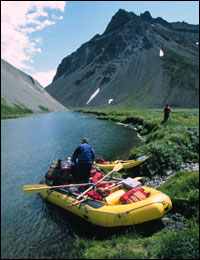 Sea kayaking and rafting trips are team participation adventures and team members have some responsibilities to other trip members. Backcountry Safaris emphasizes sharing and participating. As a trip member everyone helps to pack and load gear onto charter boats and bush planes. Some raft trips require short portages and sea kayaking trips require carrying gear and kayaks up the beach above the high water mark. When moving camp, kayaks and rafts have to be loaded and unloaded. On the first day of each trip guides will instruct trip members on how to set up their tents. Sea kayaking and rafting trips are team participation adventures and team members have some responsibilities to other trip members. Backcountry Safaris emphasizes sharing and participating. As a trip member everyone helps to pack and load gear onto charter boats and bush planes. Some raft trips require short portages and sea kayaking trips require carrying gear and kayaks up the beach above the high water mark. When moving camp, kayaks and rafts have to be loaded and unloaded. On the first day of each trip guides will instruct trip members on how to set up their tents.
Generally the guides will do the cooking and washing dishes but they welcome help if you would like to help with this camp chore. We've found that those individuals who get the most out of their trip are those who put the most into it.
Those wishing to join Backcountry Safaris adventure trips should read through the trip information, itinerary and terms and talk with Backcountry Safaris to be sure that the adventure matches your interest.
5. How many people are on your trips? Top
Backcountry Safaris trips seldom have more than 10 guests. Trips with 6 or fewer guests are more typical. Regardless of trip size, we strive to maintain a low guest-to-guide ratio that emphasizes personal service. Because our group sizes are small, available spots frequently fill up early in the year. Guests who want to be assured of specific travel dates are advised to book reservations well in advance of their planned departure dates.
6. Do I need to know how to sea kayak to go on one of your sea kayaking trips? Top
No. Our guides will teach you how. Our adventures are designed to accommodate all levels of experience and abilities - from the complete novice to the experienced paddler who wants us to handle the arrangements and camp chores.
7. Do you have single kayaks or do I have to paddle a double kayak? 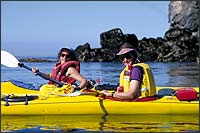 Top Top
We give you the option to paddle your own single kayak if you prefer. Most outfitters give you no choice you have to paddle a double kayak. Please inquire.
8. On your sea kayaking trips, how much paddling is generally done in a day? Top
We average between 3 to 5 hours a day. Paddling time will vary depending on the tour type and the group's general abilities and desires.
9. What gear does Backcountry Safaris supply? Top
We supply the specialized outdoor gear needed. You save money since you don't have to buy gear that you may only use one time. We supply high quality rain gear, rubber boots, pogies (kayaking gloves), or neoprene gloves on raft trips to keep your hands warm, expedition quality tents, sleeping pad if needed, and dry bags to pack your gear in.
10. Does Backcountry Safaris supply dry suits? Top
Yes, we furnish dry suits for use on appropriate trips at no additional cost. This service is beyond the normal standards and practices of most sea kayaking tour companies in Alaska. Backcountry Safaris feels that the additional cost of providing you a dry suit is worthwhile for your comfort in Alaska's cold water. Dry suits can help protect you from hypothermia and cold water shock. Also if the weather turns wet, a dry suit will add warmth and a comfort level you would not think possible in this maritime environment. Please read our hypothermia web page for more information on hypothermia and cold water shock.
11. On sea kayaking trips what will the water conditions be like? Top
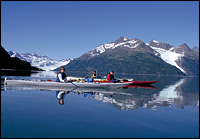 Occasionally we may encounter choppy water conditions but rarely are the waters too rough for inexperienced kayakers to paddle in. Our experienced guides will evaluate the water conditions and talk with the group about everyones comfort level before heading out for the day's paddle. At times our guides may suggest that we go out a short distance to test the water condition and see how comfortable everyone feels. We have found over the years that many times beginners feel comfortable with water conditions after they have paddled for a few minutes and often discover conditions may appear worse then it really is. To paddle or not to paddle is a group decision and we never paddle beyond the comfort level of the least experienced member of our team. Backcountry Safaris reserves the right to alter the paddling direction and trip itinerary for the comfort and safety of its guest. Occasionally we may encounter choppy water conditions but rarely are the waters too rough for inexperienced kayakers to paddle in. Our experienced guides will evaluate the water conditions and talk with the group about everyones comfort level before heading out for the day's paddle. At times our guides may suggest that we go out a short distance to test the water condition and see how comfortable everyone feels. We have found over the years that many times beginners feel comfortable with water conditions after they have paddled for a few minutes and often discover conditions may appear worse then it really is. To paddle or not to paddle is a group decision and we never paddle beyond the comfort level of the least experienced member of our team. Backcountry Safaris reserves the right to alter the paddling direction and trip itinerary for the comfort and safety of its guest.
12. What are the chances of seeing whales or bears or sea lions or caribou? Top
While we cannot guarantee what the wilderness will offer us, wildlife viewing opportunities are common. On our Kenai Fjords tours there is an excellent chance of seeing killer or humpback whales, sea lions, seals, otters and other marine mammals and birds. You may see them from either your kayak, while traveling on our water taxi, or from the shore. We usually see brown bears on our Katmai tours, and caribou are frequently seen on the Kongakut trips in the Arctic National Wildlife Refuge. Moose are also often seen.
13. What about bears, how close will they get? Top
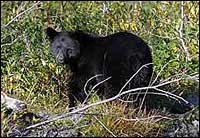 Part of the magic of Alaska is seeing wildlife, and seeing a bear in the wild is a very special experience you'll cherish lifelong. We camp in bear country and on our bear viewing trips there is a very high population of bears. Like all wild animals we try and give them space and watch them from a distance, but it is not uncommon for bears to approach us in camp or for us to stumble upon one when hiking and be at a very close distance. On the first day of your trip, our guides will teach you recommended ways to react to their presence and will also go over safe camp practices to minimize any problems. Part of the magic of Alaska is seeing wildlife, and seeing a bear in the wild is a very special experience you'll cherish lifelong. We camp in bear country and on our bear viewing trips there is a very high population of bears. Like all wild animals we try and give them space and watch them from a distance, but it is not uncommon for bears to approach us in camp or for us to stumble upon one when hiking and be at a very close distance. On the first day of your trip, our guides will teach you recommended ways to react to their presence and will also go over safe camp practices to minimize any problems.
14. What about the camping? Top
All of our campsites are in wilderness settings and there are no facilities, except what we bring along; tents, camp chairs, etc. We seek out sites with beautiful surroundings and solitude. Backcountry Safaris supplies expedition quality tents for its guests at no additional cost and if needed we can supply ground pads and sleeping bags. Use of our sleeping bags requires a $25 cleaning charge.
15. Where do we wash? Are there toilets? Top
For washing, you have the option of using small streams, rivers, the ocean, or wet wipes/liquid soaps. We furnish a cleaning station, usually near the kitchen area. Please bring biodegradable environmentally friendly cleansing agents. Toilet facilities are not common on our wilderness trips. Your guides will discuss the system that works best for ensuring your privacy and comfort.
16. What is the food like? Top
 Our menu varies depending on the particular trip. For example our sea kayaking trips are self supported, therefore all food, cooking fuel and group camping gear must fit into the kayak's limited space. The sea kayaking and bear viewing trip menus are generally simpler, more compact and lighter in weight them our raft trip menus. Even though on our kayak trips we travel a little lighter, we never use freeze dry foods. Meals are planned to be wholesome, tasty and include fresh vegetable, fruits and locally caught fish when available. A typical dinner on a kayak trip includes a salad along with the main dinner dish and a desert for after dinner. Lunches are a deli-style buffet with a variety of fresh meats and cheeses, fruits, cookies and all the trimmings. Breakfast might include French toast, omelets, and a variety of fruit and melons. There is always a variety of hot drinks available including teas, cocoa and coffee. If have any questions about our camp cuisine, please contact us. Our menu varies depending on the particular trip. For example our sea kayaking trips are self supported, therefore all food, cooking fuel and group camping gear must fit into the kayak's limited space. The sea kayaking and bear viewing trip menus are generally simpler, more compact and lighter in weight them our raft trip menus. Even though on our kayak trips we travel a little lighter, we never use freeze dry foods. Meals are planned to be wholesome, tasty and include fresh vegetable, fruits and locally caught fish when available. A typical dinner on a kayak trip includes a salad along with the main dinner dish and a desert for after dinner. Lunches are a deli-style buffet with a variety of fresh meats and cheeses, fruits, cookies and all the trimmings. Breakfast might include French toast, omelets, and a variety of fruit and melons. There is always a variety of hot drinks available including teas, cocoa and coffee. If have any questions about our camp cuisine, please contact us.
We gladly try to accommodate vegetarian, kosher meals or any special dietary needs you may have. Please notify us in advance.
17. Is it appropriate to tip the guides? Top
Gratuities are appreciated and are a nice way to say thank you! If you feel your tour was exceptional or that your guides went out of their way to make your adventure above the norm, a tip of 5 or 10% is appropriate.
Making Reservations, Terms and Conditions.
1. How do I make a reservation with Backcountry Safaris? Top
Our Secure Online Reservation Form works best for us. But if you prefer you can call us at 1-907-205-5900 • Fax 1-907-205-5902.
2. What kind of deposit is required and when is the final payment due? Top
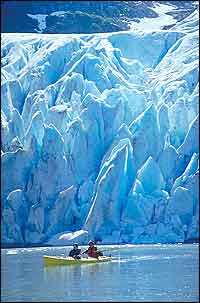 On Backcountry Safaris' guided adventures we require a 50% deposit to confirm reservations and in all cases final payment is due 60 days before tour departure. In the case of late bookings, full payment is required at the time of reservation. If final payment has not been received and no special arrangements have been made, we reserve the right to assume cancellation and fill the space from our waiting list. If, due to weather or unforeseen reason, flights or other transportation are adversely impacted and/or you are required to spend an additional night in a location, participant's hotel, meal and other costs are your responsibility. On Backcountry Safaris' guided adventures we require a 50% deposit to confirm reservations and in all cases final payment is due 60 days before tour departure. In the case of late bookings, full payment is required at the time of reservation. If final payment has not been received and no special arrangements have been made, we reserve the right to assume cancellation and fill the space from our waiting list. If, due to weather or unforeseen reason, flights or other transportation are adversely impacted and/or you are required to spend an additional night in a location, participant's hotel, meal and other costs are your responsibility.
Some payment and cancelation polices do vary some for independent contractors that supply us with various services. For additional information on these terms look on the particular trip page. At the bottom of the page, in the trip cost section, you will find a link to the providers terms if they vary from Backcountry Safaris' terms.
3. Should I buy travel insurance? Top
Yes, we highly recommend that you consider purchasing travel insurance. An unforeseen accident or illness can ruin a trip. Missing a vacation is bad enough. Losing the money you paid for your vacation is even worse. You can protect your travel investment at a very affordable rate and enjoy peace of mind when you travel. Travel insurance coverage can help with expenses for the unforeseen, including pre-departure trip cancellation; post-departure trip interruption; an optional cancel for any reason benefit and travel delay; accident and sickness medical expenses; emergency medical evacuation and repatriation; baggage and baggage delay; and more. For more information click here.
4. Does Backcountry Safaris offer group discounts and private trip? Top
Yes. We do offer discounts and private trips. We offer personalized custom trips that cater to special interests and desires of groups or families as well as discounts for groups joining a scheduled tour. For more details on discounts see our group page.
5. What about trip delays and are cost increases a possibility? Top
 Although rare, trip delays can happen. Many areas in Alaska are remote and weather can delay departure and pickup times especially when working with small charter boats and small bush air planes for transportation. We recommend that if possible, you be a little flexible in your vacation plans, especially on the scheduled return day from a remote location. When we travel to remote locations, we always carry extra food just in case. If delayed, keeping a positive attitude and thinking of it as part of the adventure will go a long way to adding to your total trip enjoyment. The possibility of delays is one reason why we recommend you consider purchasing travel insurance which can help with unforeseen delay expenses. Although rare, trip delays can happen. Many areas in Alaska are remote and weather can delay departure and pickup times especially when working with small charter boats and small bush air planes for transportation. We recommend that if possible, you be a little flexible in your vacation plans, especially on the scheduled return day from a remote location. When we travel to remote locations, we always carry extra food just in case. If delayed, keeping a positive attitude and thinking of it as part of the adventure will go a long way to adding to your total trip enjoyment. The possibility of delays is one reason why we recommend you consider purchasing travel insurance which can help with unforeseen delay expenses.
Backcountry Safaris is not responsible for any additional cost accrued due to delays for any reason, including bad weather, water conditions, road conditions, or transportation delays. Backcountry Safaris also reserves the right to make itinerary changes where it deems necessary for the safety and comfort of its guests.
Cost increases. Prices are subject to increase without notice. Unfortunately in the past few years, trip overhead expenses have fluctuated greatly and with unstable fuel costs there can be significant cost increases that we can no longer absorb. We do our best to keep trip prices as low as possible and we regret this situation but all trips are subject to prices increases and fuel surcharges. We will notify you in advance before your arrival if we are faced with cost increases over $5 on day trips and over $50 on multi-day trips.
6. What are your cancelation policies? Top
Cancellation and payment polices do vary some for independent contractors that supply us with various services. For additional information on these terms, look on the particular trip page. At the bottom of the page in the trip cost section, you will find a link to the providers terms if they vary from Backcountry Safaris' terms.
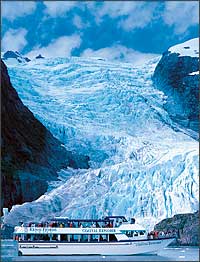 Cancellation terms for tours that Backcountry Safaris guides. It is our intention to be fair with everyone who must cancel, but limitations must be set. All cancellations must be in writing and received within times specified below. If written notice of cancellation is received in our office more than 120 days prior to departure, the cancellation fee is 10% of tour cost. If written notice of cancellation is received in our office 120-60 days prior to departure your deposit will be forfeited but participants will receive credit in the amount of the deposit for a future Backcountry Safaris tour. If written notice of cancellation is received in our office less than 60 days before departure, then no refund or credit shall be made. Backcountry Safaris also reserves the right to make reasonable schedule changes where it deems necessary for the safety and comfort of its guests, or to cancel all or part of any tour in its reasonable discretion, for the safety of its participants or due to insufficient number of participants signing up for a tour. In the event of a cancellation by Backcountry Safaris of the entire tour a full refund of amounts paid to Backcountry Safaris on land cost will be given. Backcountry Safaris and participating outfitters are not responsible for any other expenses incurred by tour members such as equipment, medical cost, air tickets, etc. All refunds shall be processed by the main office of Backcountry Safaris. All refunds will be made through the booking travel agent used on the basis of the amount actually received by Backcountry Safaris less any applicable cancellation fees and charges. Cancellation terms for tours that Backcountry Safaris guides. It is our intention to be fair with everyone who must cancel, but limitations must be set. All cancellations must be in writing and received within times specified below. If written notice of cancellation is received in our office more than 120 days prior to departure, the cancellation fee is 10% of tour cost. If written notice of cancellation is received in our office 120-60 days prior to departure your deposit will be forfeited but participants will receive credit in the amount of the deposit for a future Backcountry Safaris tour. If written notice of cancellation is received in our office less than 60 days before departure, then no refund or credit shall be made. Backcountry Safaris also reserves the right to make reasonable schedule changes where it deems necessary for the safety and comfort of its guests, or to cancel all or part of any tour in its reasonable discretion, for the safety of its participants or due to insufficient number of participants signing up for a tour. In the event of a cancellation by Backcountry Safaris of the entire tour a full refund of amounts paid to Backcountry Safaris on land cost will be given. Backcountry Safaris and participating outfitters are not responsible for any other expenses incurred by tour members such as equipment, medical cost, air tickets, etc. All refunds shall be processed by the main office of Backcountry Safaris. All refunds will be made through the booking travel agent used on the basis of the amount actually received by Backcountry Safaris less any applicable cancellation fees and charges.
7. What are Backcountry Safaris limitations of liability? Top
Although every precaution is taken to safeguard you and your belongings, our adventure trips involve inherent risks and dangers which are beyond our control and Backcountry Safaris shall assume no responsibility for personal injuries or deaths and loss of personal property. Due to the nature of the activities, a condition of your participation is that you will read and sign the Acknowledgment and Release of Liability before the tour begins. A copy is available on request.
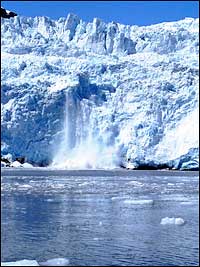 Backcountry Safaris uses independent contractors to supply us with various services on many of our adventures. Some trips require us to use independent tour guides, drivers, lodges and hotels, air and water taxis, and other suppliers. Because we do not own, operate, manage, control, or supervise these suppliers, we cannot be liable for any acts or omissions on their part, including any negligence, gross negligence, or reckless or willful acts. Backcountry Safaris assumes no responsibility for any injury, loss, damage, delay, or death to person or property arising from the negligent or willful act or failure to act of any person who is to or does provide goods or services for this trip or for the action or inaction of any other third party. Without limitation, Backcountry Safaris is not responsible for acts of God, equipment failures, vehicle or vessel accidents, illness from food or otherwise, annoyance, delays, failure of any means of conveyance to arrive or depart as scheduled, and changes in transit or hotel and lodge services over which it has no control. Backcountry Safaris uses independent contractors to supply us with various services on many of our adventures. Some trips require us to use independent tour guides, drivers, lodges and hotels, air and water taxis, and other suppliers. Because we do not own, operate, manage, control, or supervise these suppliers, we cannot be liable for any acts or omissions on their part, including any negligence, gross negligence, or reckless or willful acts. Backcountry Safaris assumes no responsibility for any injury, loss, damage, delay, or death to person or property arising from the negligent or willful act or failure to act of any person who is to or does provide goods or services for this trip or for the action or inaction of any other third party. Without limitation, Backcountry Safaris is not responsible for acts of God, equipment failures, vehicle or vessel accidents, illness from food or otherwise, annoyance, delays, failure of any means of conveyance to arrive or depart as scheduled, and changes in transit or hotel and lodge services over which it has no control.
Backcountry Safaris reserves the right to make changes to trip itineraries for the comfort and well being of its guests. And at the trip leader's discretion if the leader feels that a trip member's further participation may be detrimental to him or her, or to other trip members, a member may be asked to leave the trip
 |
Backcountry Safaris
P.O. Box 1397 Seward, Alaska USA 99664
1-907-205-5900 • Fax 1-907-205-5902
 |
Backcountry Safaris is a member of the following trade and travel organizations:
 | |
|
Alaska Facts |
- Alaska State: Flower Forget-me-not
- Alaska State Bird: Willow Ptarmigan
- Alaska State Tree: Sitka Spruce
- Alaska State Mineral: Gold
- Alaska State Gem: Jade
- Alaska State Mammal: Moose
- Alaska State Fish: King Salmon
- Alaska State Sport: Dog Mushing
- State Nickname: The Last Frontier
- State Motto: North To The Future
- State Song: Alaska's Flag
- Alaska State Holidays: Alaska Day, Oct.18th and Seward's Day March 27
- The United States purchased Alaska from Russia in 1867 for $7.2 million, about 2 cents an acre.
- 15 species of whales are found in Alaska waters.
- Alaska has more than 80 potentially active volcanoes.
- The flag of Alaska contains 8 gold stars representing the Big Dipper and the North Star on a field of blue.
- Longest Day: Barrow the sun rises on May 10th, it don't set for nearly 3 months.
- Shortest Day: Barrow when sun sets on November 18th, Barrow residents do not see the sun again for nearly two months.
- What maybe the oldest documented site of human habitation in North America, the Mesa Site found in 1993 lies 150 miles north of the Arctic Circle.
- There are more than 3,000 rivers in Alaska and over 3 million lakes.
- The name of Alaska probably comes from Unalaska, an Aleut word derived from agunalaksh which translates the shores where the sea breaks its back.
- The 90,000 Native people of Alaska make up roughly 15% of the state's population.
- Almost half of Alaska (175 million acres) is classified as wetlands.
- Highest Point: Mount McKinley, 20,320 ft
- 17 of the highest 20 mountains in the U.S. are in Alaska. It has 19 peaks over 14,000 feet.
- Of the total 365 million acres of land that make up Alaska, less than one-twentieth of 1% is settled.
- Alaska has numerous natural hot springs found across the state. Near Port Moller Hot Springs on the Alaska Peninsula, a village site has been occupied intermittently over the past 3000 years.
- The largest gold nugget found in Alaska was discovered near Nome in 1903. It weighed 155 troy ounces and was 2 inches thick, 4 inches wide and 7 inches long.
- It is estimated that there are 100,000 glaciers in Alaska covering 29,000 square miles or 5% of the state.
- The estimated tidal shoreline of Alaska including inlets, islands and shoreline to head of tidewater is 47,300 miles.
- The largest state in the union, Alaska is one-fifth the size of the Lower 48 and spans 2,400 miles east to west and 1,420 miles north to south.
- On average 1,000 earthquakes registering 3.5 or more on the Richter scale occur in Alaska each year.
- Most snowfall in 24 hours: 62 inches, at Thompson Pass near Valdez, Dec. 1955.
- Most monthly snowfall: 297.9 inches, at Thompson Pass near Valdez, Feb. 1953.
- Most snowfall in a season: 974.5 inches (over 81 feet), at Thompson Pass near Valdez, 1952-53.
- Most precipitation in 24 hours: 15.2 inches, in Angoon, Oct. 12, 1982.
- Most monthly precipitation: 70.99 inches at MacLeod Harbor (Montague Island), Nov. 1976.
- Most annual precipitation: 332.29 inches at MacLeod Harbor (Montague Island), 1976.
- Highest recorded temperature: 100ÁF, at Ft. Yukon, June 27, 1915.
- Lowest recorded temperature: -80ÁF, at Prospect Creek Camp, Jan. 23, 1971.
- Earthquakes: 9.2 on the Richter Scale on March 27th 1964 - the strongest ever recorded in North America
- 430 bird species have been sited in Alaska.
- Over 50 species of wild fruit is found in Alaska including Low and Highbush Cranberries, Blueberries, Salmonberries, wild rose and strawberries.
- Three species of bear are found in Alaska: the black, the brown/grizzly and the polar bear. Brown bears are the largest living omnivorous land mammals in the world.
- The Arctic Circle is the latitude where the sun does not set for one day at summer solstice and does not rise for one day at winter solstice.
|
Sea Kayaking Related Links |
|
Kenai Fjords Related Links |
|
Kenai Fjords Wildlife |
|
Kenai Fjords Birds |
|
Suggested Alaska Reading |
|
Kenai Fjords Weather |
|
Current Seward, AK Weather |
|
| |
|







